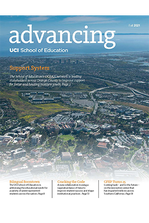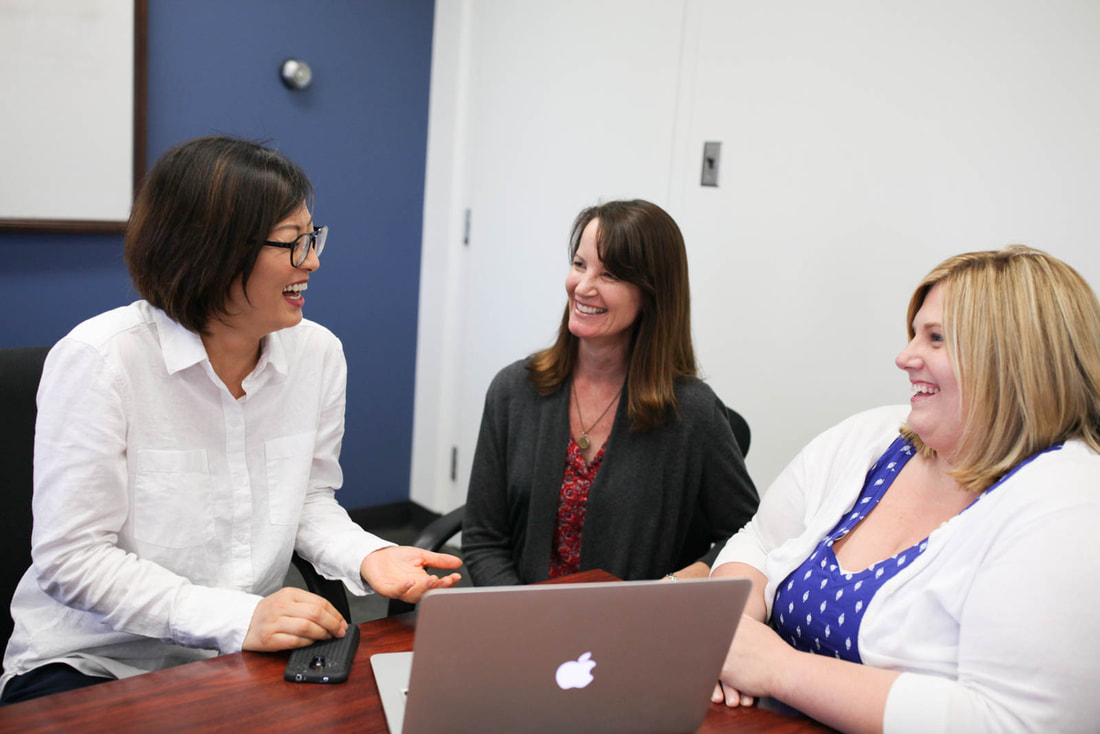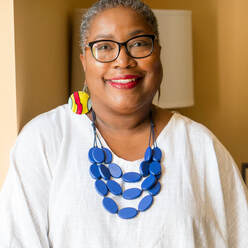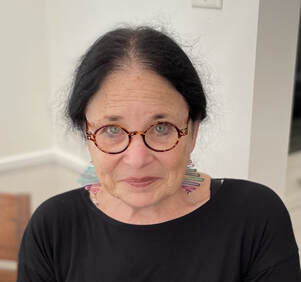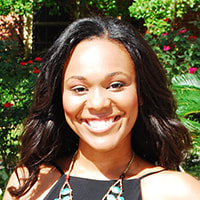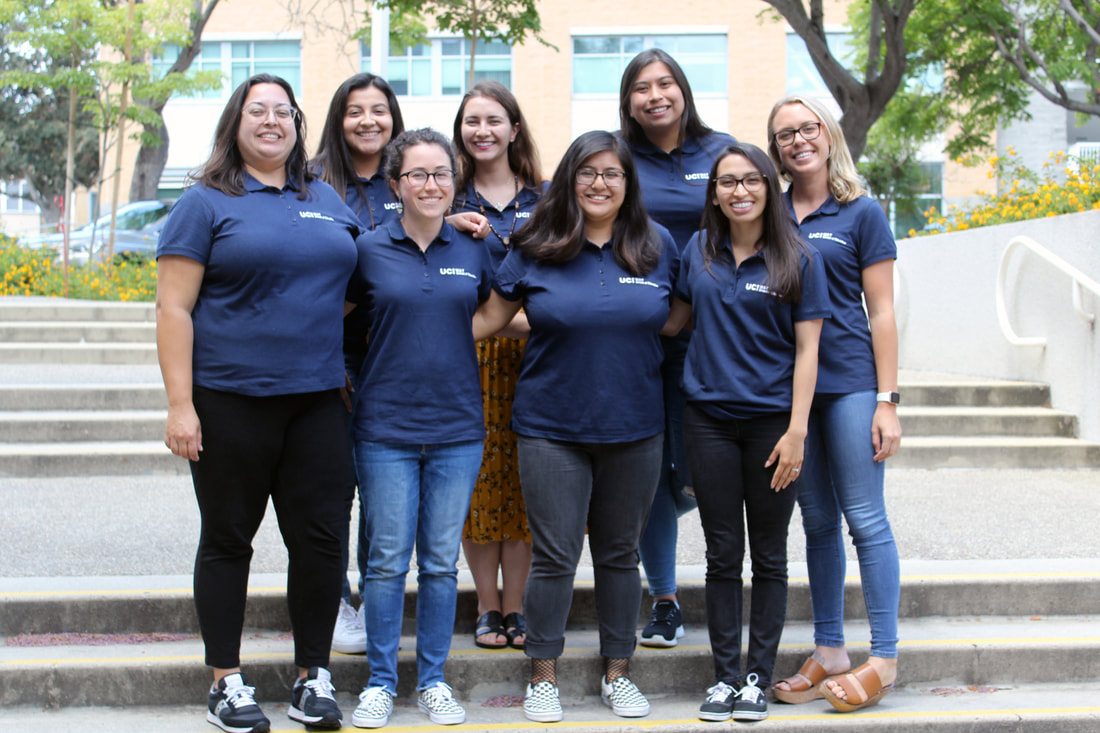Bilingual Boomtown
With a stable of world-class faculty dedicated to research on bilingualism and a new bilingual specialization in its teacher preparation program, the UCI School of Education is addressing the educational needs for a variety of underrepresented students across the nation.
Over the past few years, the UCI School of Education has added a cadre of prominent researchers and experts on various topics related to bilingualism, resulting in an ecosystem of grants, publications, research centers and community-focused work.
This summer, the school also introduced a Bilingual Authorization Program, which trains teacher candidates to become leaders in K-12 dual immersion schools.
Coupled together, the UCI School of Education has quickly become a paragon in research and training on topics related to bilingualism.
“Not only are we the home to several world-class faculty dedicated to bilingualism, but the research they are conducting focuses on different facets of bilingualism, including dialect, literacy, language development and more,” said Richard Arum, dean and professor, UCI School of Education. “With this multi-faceted approach, the School of Education is equipped to support the rapidly increasing educational demands of several underrepresented populations.”
This summer, the school also introduced a Bilingual Authorization Program, which trains teacher candidates to become leaders in K-12 dual immersion schools.
Coupled together, the UCI School of Education has quickly become a paragon in research and training on topics related to bilingualism.
“Not only are we the home to several world-class faculty dedicated to bilingualism, but the research they are conducting focuses on different facets of bilingualism, including dialect, literacy, language development and more,” said Richard Arum, dean and professor, UCI School of Education. “With this multi-faceted approach, the School of Education is equipped to support the rapidly increasing educational demands of several underrepresented populations.”
THE MANY FACETS OF BILINGUALISM
Faculty at the School of Education focus on a variety of issues related to bilingualism, including language and literacy acquisition, language variation, multilingualism, linguistic diversity, and more.
Elizabeth Peña, professor and associate dean of faculty development and diversity, focuses her research on how children develop, store and access two languages, and the consequences – advantages and challenges – of knowing two languages. Peña is particularly interested in studying children with developmental language disabilities (DLD).
DLD is one of the most common childhood disabilities, Peña explained, affecting roughly seven to ten percent of the population. Additionally, there exists a high co-morbidity with DLD and other areas, including ADHD, math disabilities, reading disabilities and learning disabilities.
Through a $3.18 million grant from the National Institute on Deafness and Other Communication Disorders, Peña and her research team are creating and validating a tablet-based test that speech-language pathologists can administer, in English, to children who are in the process of learning English as a second language. The test, which will target Spanish- and Vietnamese-speaking English Language Learners ages four to nine, is meant to properly identify DLDs by differentiating language impairment from language difference.
“This is a completely new approach – the two groups of children that will be tested use very different languages,” Peña said. “We will be tracking normal developmental errors, acquisition errors, and DLD and comparing our findings between the two languages.”
Peña is optimistic that results from the grant will expand to serve most children who may be experiencing DLDs; she anticipates the test will be useful with similar Romance and Austroasiatic languages, and thus apply to 90 percent of the languages spoken in the U.S.
Elizabeth Peña, professor and associate dean of faculty development and diversity, focuses her research on how children develop, store and access two languages, and the consequences – advantages and challenges – of knowing two languages. Peña is particularly interested in studying children with developmental language disabilities (DLD).
DLD is one of the most common childhood disabilities, Peña explained, affecting roughly seven to ten percent of the population. Additionally, there exists a high co-morbidity with DLD and other areas, including ADHD, math disabilities, reading disabilities and learning disabilities.
Through a $3.18 million grant from the National Institute on Deafness and Other Communication Disorders, Peña and her research team are creating and validating a tablet-based test that speech-language pathologists can administer, in English, to children who are in the process of learning English as a second language. The test, which will target Spanish- and Vietnamese-speaking English Language Learners ages four to nine, is meant to properly identify DLDs by differentiating language impairment from language difference.
“This is a completely new approach – the two groups of children that will be tested use very different languages,” Peña said. “We will be tracking normal developmental errors, acquisition errors, and DLD and comparing our findings between the two languages.”
Peña is optimistic that results from the grant will expand to serve most children who may be experiencing DLDs; she anticipates the test will be useful with similar Romance and Austroasiatic languages, and thus apply to 90 percent of the languages spoken in the U.S.
|
Professor and Senior Associate Dean Young-Suk Kim’s primary research areas include development of language, cognition, literacy skills and effective instruction of language and literacy skills across languages and writing systems. In her work, Kim proposes and tests theories on factors that influence reading, writing, and language skills for children from diverse linguistic and socio-economic backgrounds, including English-speaking children, dual language learners, English learners, and children learning to read and write in languages other than English, including Korean, Spanish and Chinese.
Kim’s recent work, funded by the Institute of Education Sciences, has shown the importance of higher-order cognitions – such as making inferences, perspective taking and comprehension monitoring – for dual language learners of Spanish and English. In a recent study, Kim and her team analyzed writing skills and higher-order cognitions among dual language learners in first through third grades to see if the writing skills and higher order cognitions were a single skill across languages, or two related skills organized by language, or have an alternative structure. |
Kim found that writing skills were a single skill – i.e., dual language learners who write a coherent quality text in English also write a coherent text in Spanish. Additionally, dual language learners’ higher-order cognitions captured in English and Spanish were best described to have a bifactor structure – one that captures higher-order skills across English and Spanish, and language-specific aspects. Importantly, higher-order cognitions were fairly strongly related to their writing skills.
“These results indicate that higher-order cognitive skills that develop in a particular language context likely transfer to another language, and they are important to writing skills for dual language learners,” Kim said. “These findings indicate the importance of higher-order thinking skills in students’ first language or second language for students’ writing development.”
“These results indicate that higher-order cognitive skills that develop in a particular language context likely transfer to another language, and they are important to writing skills for dual language learners,” Kim said. “These findings indicate the importance of higher-order thinking skills in students’ first language or second language for students’ writing development.”
|
Professor Julie Washington joined the UCI School of Education in January from Georgia State University. Her research is focused not on bilingualism, but bidialectalism. Bidialectalism refers to within language variation, whereas bilingualism refers to across language variation.
Washington studies a dialect within American English, called African American English (AAE), and focuses on the intersection of language variation, poverty and reading development. Specifically, she is focused on how the use of AAE impacts the development of early reading skills in African American children growing up in poverty. Her research seeks to move the perception about dialect/language variation away from deficit-based thinking. “It is true that African American children who are dense users of African American English struggle with development of early literacy skills, but this does not mean that AAE cannot or should not be used to support the development of these important early skills,” Washington said. |
Through a project funded by the National Institutes of Health, Washington is developing an assessment for African American children in third through fifth grade that considers the degree of dialect use, which has been an important indicator of success with language-based skills such as reading, writing and spelling.
“Traditional language measures often conflate dialect use and communicative competence, and children who use the most dialect are seen as the least competent speakers,” Washington said. “This project focuses on measuring linguistic competence in African American children who are high-density speakers of AAE.”
Washington proposes that the impact of density on assessment has resulted in an underestimation of the linguistic competence of African American children, particularly those growing up in poverty, and who are most likely to be dense users of AAE.
“Traditional language measures often conflate dialect use and communicative competence, and children who use the most dialect are seen as the least competent speakers,” Washington said. “This project focuses on measuring linguistic competence in African American children who are high-density speakers of AAE.”
Washington proposes that the impact of density on assessment has resulted in an underestimation of the linguistic competence of African American children, particularly those growing up in poverty, and who are most likely to be dense users of AAE.
|
Distinguished Professor Judith Kroll joined the UCI School of Education in July. Recently elected a fellow by the American Academy of Arts & Sciences, Kroll focuses her research on the cognitive and neural processes that support language learning and active bilingualism.
Kroll’s research has shown that both languages are always active in bilingual individuals, creating a dynamic exchange that shapes language use. From this, Kroll and her Bilingualism, Mind and Brain Lab are studying a multitude of impacts of being bilingual, including language learning in childhood, adult literacy, and benefits of new language learning for older adults. A particularly exciting finding in their research is that individuals who are immersed in a linguistically diverse environment, like Southern California, may be advantaged in learning a new language. Through an NSF PIRE (Partnerships for International Research and Education) project, Kroll and her team have developed an international network of bilingualism research to understand the nature of the bilingual mind and brain, the processes of bilingual language development, and the consequences of bilingualism for cognition. |
In fall 2021, Kroll and Peña, together with others in the School of Education and at UCI, will co-direct a new branch of Bilingualism Matters, an international service organization that brings the research on bilingualism to the public and that enables community experience to be brought into the university.
For example, many families are conflicted on whether or not to continue using a “home language” in contexts where the home language is not the language of the community. Research is clear, Kroll explained – it is overwhelmingly beneficial to maintain the home language and to seek dual language immersion opportunities.
“For many, this is a counterintuitive observation,” Kroll said. “But, the research shows that young children benefit early on from instructions that builds on their stronger language, typically the home language, in acquiring literacy and other academic skills.”
Bilingualism Matters hopes to work with stakeholders in the community to support opportunities for enhancing maintenance of the home language.
Associate Professor Penelope Collins’ research focuses on language and literacy development for individuals from early childhood through college. She studies bilingualism not only in the U.S. context, but also researches English as a foreign language. For example, she is currently studying the use of bilingual e-books to help Chinese families promote English development with their children.
Like others, Collins wants to position her work so that it does not focus on the deficits that a language minority child might have, but rather the assets he or she has.
“Even in early childhood we are finding that multilingualism can be an asset in developing early literacy skills,” Collins said.
Collins is also director of the Collins Literacy Lab, which focuses on literacy attainment for youth and children from linguistically diverse backgrounds.
Current research projects include explorations of home-literacy environments of young bilingual children, discipline-specific writing in history and STEM, the use of technology to support literacy instruction, and how literacy interventions can be used to support content learning in biology classes.
“The group of people that the School of Education has focused on bilingualism and what the school is doing toward these issues, compared to other schools – I would say that we’re probably one of the best in the country,” Collins said.
For example, many families are conflicted on whether or not to continue using a “home language” in contexts where the home language is not the language of the community. Research is clear, Kroll explained – it is overwhelmingly beneficial to maintain the home language and to seek dual language immersion opportunities.
“For many, this is a counterintuitive observation,” Kroll said. “But, the research shows that young children benefit early on from instructions that builds on their stronger language, typically the home language, in acquiring literacy and other academic skills.”
Bilingualism Matters hopes to work with stakeholders in the community to support opportunities for enhancing maintenance of the home language.
Associate Professor Penelope Collins’ research focuses on language and literacy development for individuals from early childhood through college. She studies bilingualism not only in the U.S. context, but also researches English as a foreign language. For example, she is currently studying the use of bilingual e-books to help Chinese families promote English development with their children.
Like others, Collins wants to position her work so that it does not focus on the deficits that a language minority child might have, but rather the assets he or she has.
“Even in early childhood we are finding that multilingualism can be an asset in developing early literacy skills,” Collins said.
Collins is also director of the Collins Literacy Lab, which focuses on literacy attainment for youth and children from linguistically diverse backgrounds.
Current research projects include explorations of home-literacy environments of young bilingual children, discipline-specific writing in history and STEM, the use of technology to support literacy instruction, and how literacy interventions can be used to support content learning in biology classes.
“The group of people that the School of Education has focused on bilingualism and what the school is doing toward these issues, compared to other schools – I would say that we’re probably one of the best in the country,” Collins said.
|
Assistant Professor Brandy Gatlin-Nash studies language and literacy skills of children who are learning to read and write, along with linguistic diversity among both children and adults as it relates to education in general.
In a recent paper, Gatlin-Nash and Peña analyzed African American English use among young Latinx bilingual children. In the study, they also sought to determine the accuracy of the Bilingual English Spanish Assessment (BESA) in classifying children with and without developmental language disorder. They found that children with language disorders tended to use some features of AAE more frequently than their typically developing peers and that the BESA appears to be a valid tool for the identification of developmental language disorder among children exposed to both AAE and Spanish. |
“The UCI School of Education has purposely sought out researchers who focus on linguistic diversity and issues related to equity and diversity,” Gatlin-Nash said. “In my four years at UCI, the School of Education’s faculty has grown immensely, not just in number, but in terms of broadness and scope of research backgrounds.”
TRAINING THE FUTURE
With a strong nexus of research and community-engagement opportunities, graduate students are imbued with the skills necessary to carry this work further in the future.
“I always tell any prospective graduate students to go to a place where there are multiple people doing what you’re interested in,” Collins said. “That makes it easier to have really strong committees for your research, but it also provides you with a real richness and breadth of knowledge.”
“At the School of Education, work on language and literacy acquisition, language variation, multilingualism, and linguistic diversity are the norm, not exceptions or special topics,” Kim said. “Faculty on the language and literacy topics have different disciplinary training – such as psychology, speech and language, education and special education – and they collaborate. This means students will experience cross-disciplinary work, which is necessary but is not always found in schools of education. Students will have chances to be mentored by a team of experts.”
“Southern California is an area of the U.S. that is culturally and linguistically diverse, but the country at large is predominantly an English-only monolingual context in which there are profound misunderstandings and a great deal of mythology about what it means to be bilingual,” Kroll said. “Most of our students at UCI are bilingual and many have grown up with a home language or dialect other than General American English. Having an opportunity to conduct research and take classes that illuminate the power of learning and using two or more languages or dialects can be a transformative experience.”
In addition to research, the School of Education this summer added a Bilingual Authorization Program (BAP) to its Master’s of Arts in Teaching + Credential Program.
“I always tell any prospective graduate students to go to a place where there are multiple people doing what you’re interested in,” Collins said. “That makes it easier to have really strong committees for your research, but it also provides you with a real richness and breadth of knowledge.”
“At the School of Education, work on language and literacy acquisition, language variation, multilingualism, and linguistic diversity are the norm, not exceptions or special topics,” Kim said. “Faculty on the language and literacy topics have different disciplinary training – such as psychology, speech and language, education and special education – and they collaborate. This means students will experience cross-disciplinary work, which is necessary but is not always found in schools of education. Students will have chances to be mentored by a team of experts.”
“Southern California is an area of the U.S. that is culturally and linguistically diverse, but the country at large is predominantly an English-only monolingual context in which there are profound misunderstandings and a great deal of mythology about what it means to be bilingual,” Kroll said. “Most of our students at UCI are bilingual and many have grown up with a home language or dialect other than General American English. Having an opportunity to conduct research and take classes that illuminate the power of learning and using two or more languages or dialects can be a transformative experience.”
In addition to research, the School of Education this summer added a Bilingual Authorization Program (BAP) to its Master’s of Arts in Teaching + Credential Program.
|
By participating in the program, teacher candidates will receive the skills necessary to excel as leaders of dual immersion programs and instruction. In a dual immersion program, students learn and are taught in both English and a second language over the course of their K-12 education. The main goals for all dual immersion programs are for students to achieve strong levels of academic proficiency in all subject areas, become bilingual and biliterate and to develop sociocultural competence.
More than half of Orange County’s 28 school districts offer dual immersion programs in their schools, and more than a thousand additional schools across California offer dual immersion programs. There is an increasing demand for both admission to these programs and for teachers to staff the schools. UCI currently partners with dual immersion schools in the Anaheim Elementary School District, Capistrano Unified School District, Garden Grove Unified School District, Magnolia School District, Newport-Mesa Unified School District, Saddleback Valley Unified School District, and Santa Ana Unified School District. |
“I am so proud of the work our team has done to build a strong bilingual program, and pleased that our BAP graduates will continue to promote linguistic diversity in our local schools and communities,” said Virginia Panish, director of teacher education, UCI School of Education.
Overall, the School of Education is an unparalleled, one-stop shop for everything related to bilingualism.
“It’s really fun and interesting to have people who study literacy, dialect, oral language development, and bilingualism, including bimodal bilinguals,” Peña said. “I don’t think any place in the country has people who do all of these things in one place.”
Overall, the School of Education is an unparalleled, one-stop shop for everything related to bilingualism.
“It’s really fun and interesting to have people who study literacy, dialect, oral language development, and bilingualism, including bimodal bilinguals,” Peña said. “I don’t think any place in the country has people who do all of these things in one place.”

